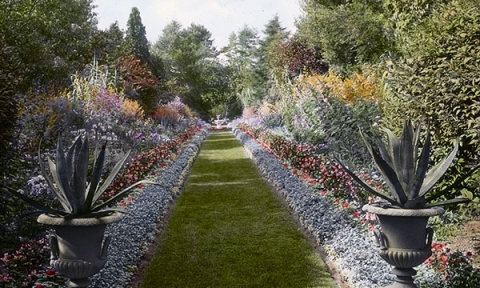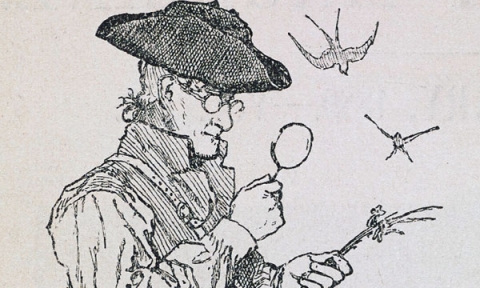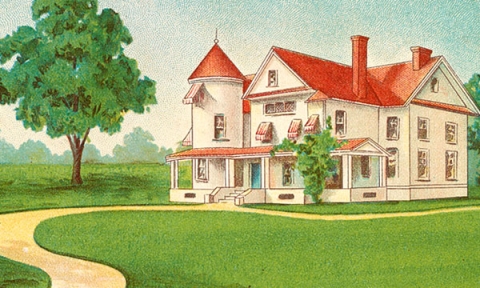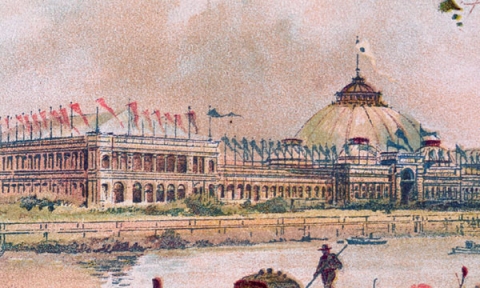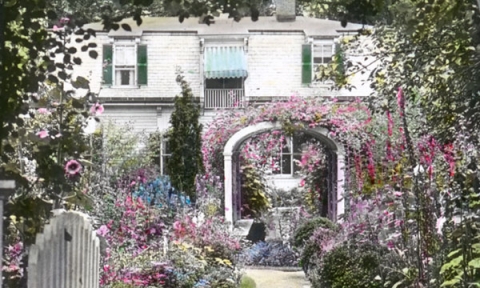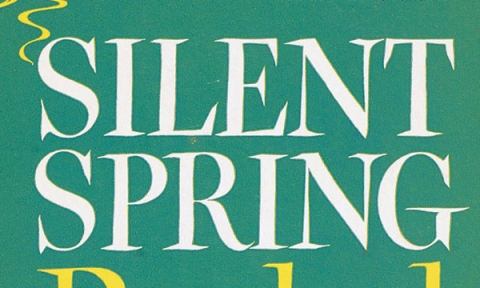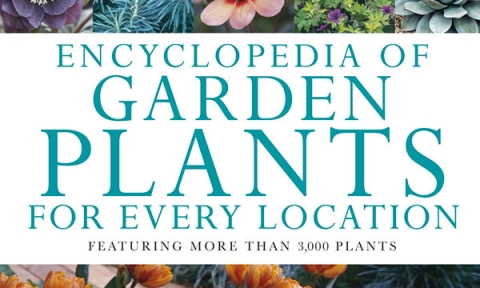Sustainable Gardens
Today, many gardeners try to work in sync with nature. They avoid pesticides and seek alternatives to lawns. They use native and perennial plants to support biodiversity by nurturing pollinators, birds, and other wildlife. A growing environmental awareness makes gardeners ask: How can we make our gardens and green spaces both beautiful and beneficial?
While not a garden book, Rachel Carson’s Silent Spring was influential in changing American attitudes toward pesticides and herbicides, which were widely used after World War II to achieve mosquito-free backyards and velvety green lawns. Today, American gardeners have turned to organic gardening methods to enhance plant growth and repel insects naturally.
Rachel Carson, Silent Spring, Boston, 1962. Loaned by Lilla Vekerdy
Author and publisher J.I. Rodale (1898–1971) was among the first to advocate chemical-free organic gardening practices for healthful living. He was a proponent of organically grown vegetables in the 1940s, quite a radical idea at that time.
Organic Gardening and Farming, July 1963, Emmaus, Pennsylvania: Rodale Press
In the 1970s, landscape architects James van Sweden and Wolfgang Oehme found inspiration in the prairie to create a “New American Garden” style, incorporating large swaths of meadow-like grasses and native perennials. Prairie or meadow gardening supports habitats for birds, butterflies, and other wildlife.
Danish-born Jens Jensen (1860–1951) influenced the style of Van Sweden and Oehme. Jensen was an early proponent of using native plants to create gardens in harmony with the natural environment.
Prairie garden, Archives of American Gardens, Ken Druse Garden Photography Collection
A wildflower native to North America, the Black-eyed Susan (Rudbeckia) can be grown in many areas across the country. It is a popular plant choice for everything from pollinator gardens, designed to attract pollinating insects, to prairie restoration.
First published in 1870, The Wild Garden by Irish-born professional gardener William Robinson (1838–1935) was the first to introduce the idea of the sustainable garden. Rejecting fussy and labor-intensive Victorian flower beds, Robinson designed gardens inspired by the natural habitats of North America and Europe, and encouraged the use of native plants or hardy exotics.
William Robinson and Rick Darke, The Wild Garden, Portland, Oregon, 2009
Many American gardeners, even in urban areas, are paying more attention to the role their gardens play in the wider environment. By incorporating native plants and water features, home gardeners provide food and shelter for pollinators and wildlife, in addition to creating beauty.
Rick Darke and Douglas W. Tallamy, The Living Landscape: Designing for Beauty and Biodiversity in the Home Garden, Portland, Oregon, 2014
Some American gardeners have “retired” their lawns. In places where water use is restricted, they have turned to drought-adapted native grasses that cut down on mowing, watering, and weeding—or replaced their lawns entirely with crushed stone or gravel.
“Retired lawn” in San Rafael, California, 1999, Phoebe Gilpin, photographer, Archives of American Gardens, Garden Club of America Collection
You don’t need a prairie to garden sustainably. Even in a concrete jungle, gardeners find ways to create beauty and support the environment.
The Concrete Jungle, Philadelphia, Pennsylvania, 2002, Lawrie Harris, photographer
Archives of American Gardens, Garden Club of America Collection

